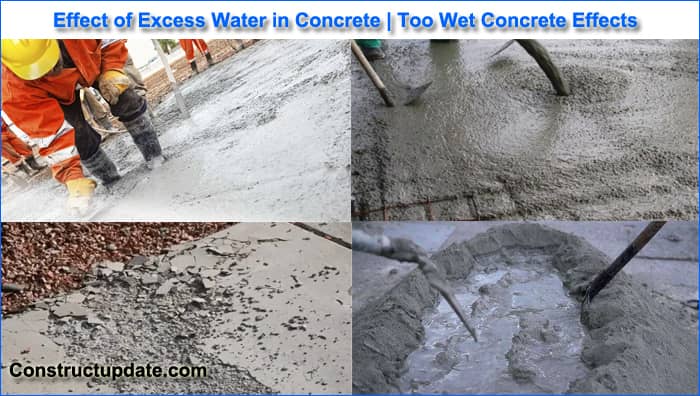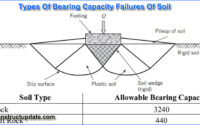Effects of Too Much Water in Concrete | Too Wet Concrete
Water in Concrete: Why is it Used?
Any sort of concrete must contain water as a constituent. In a concrete mixture, water hydrates the cement to create a paste, which is then combined with aggregates and undergoes a chemical reaction known as “curing” between the cement and the water.
Cement to water ratio in the mix can be altered by a professional to account for various meteorological, climatic, and workability needs. Cement to water ratio determines the strength of cured concrete.
When Concrete is Too Wet, What Happens?
Too much water in your concrete mix can have a number of negative effects, all of which can modify the cement-to-water ratio and have influence on your project.
An excessive amount of water in your concrete will weaken the cured slab and increase the likelihood of shrinkage and cracking. In a location where freezing and thawing temperatures are likely, cracked concrete is more hazardous because the slab won’t be as robust. In addition to being more porous after curing, concrete that is overly wet will make it more difficult to obtain the desired polish and may even render it unusable.
In other words, a too-wet concrete mix could negatively affect the strength, longevity, and durability of your project. It’s a problem that can be expensive yet is entirely preventable.

Determining Whether Concrete Is Too Wet
Before it is poured, expertly mixed concrete is examined for flaws and workability. This guarantees that the concrete is uniform across a bigger delivery of several batches. A freshly mixed concrete cone is filled with water and placed on a hard, non-absorbent surface to be tested for slump or subsidence. By measuring the slump and observing the shape the concrete becomes when the cone is removed, a professional can determine if the mix is excessively moist.
When the concrete maintains its cone-shaped shape and sinks uniformly across the top, this is called true slump and shows that the materials have been properly blended and the mix is workable. A reliable method of determining whether batches of concrete are properly mixed and will be consistent after curing is to measure how much the concrete sinks in “true slump.” Shear slump is when one side of the cone sinks and separates from the top; if this occurs, the mixture is probably too wet since the materials aren’t sufficiently bonding (sticking together).
When the proportion of water to cement is completely off, collapse slump happens, which leads to the collapse of the pile. Once the mixture has been altered, the test should be performed for both shear slump and collapse slump.
How Can Too-Wet Concrete Be Fixed?
The secret to concrete’s enchantment is that every component must work flawlessly together. An inferior product will result from mixing sand, stone, cement, and water in the wrong proportions.
The injection of too much water during the concrete mixing process is one of the most frequent mistakes. This straightforward error can cause a wide range of issues both during the curing process and in the future.
Don’t worry if you over-watered your concrete mixture. There are several options for fixing the problem. We’ll go over the issues that arise when you overwater concrete in this article.
Role Of Water in Concrete Mix
Sand, stone, and cement are mixed in a specified proportion to create dry concrete. Cement undergoes a chemical reaction when water is added, creating a paste that fuses the parts together. As the concrete cures, the water evaporates, boosting the material’s tensile strength. We call this procedure “curing.”
Effect Of Adding Too Much Water In Concrete
Excess water is retained inside the concrete after the curing process is complete if there is too much water added to the mix. Due to the water gradually evaporating over time and lowering the concrete’s compressive strength, this frequently leads to the development of tiny fissures.
Another problem with too much water in the concrete mix is water that “bleeds.” Water collects here while the concrete dries, which can cause the concrete’s surface to spall and crack. This will not only weaken the concrete’s strength but also make the finished product unsightly.
How Can Watery Concrete Be Prevented?
Depending on the stage it is at, there are three solutions for a concrete mix that contains too much water.
- To balance the ratio in a freshly mixed batch, only add a little quantity of dry concrete mix. The mixed mixture should be stirred until it is the proper consistency.
- Use only a tiny bit at a time; otherwise, the mixture can become too dry or too moist.
- Try wiping up the bleed water with cloths or draining it with a pump if you have already poured the concrete and started the curing process but still see it on the surface. Unfortunately, there isn’t much more you can do at this stage; you might need to make concessions and anticipate that the final product will have some degree of weakness.




